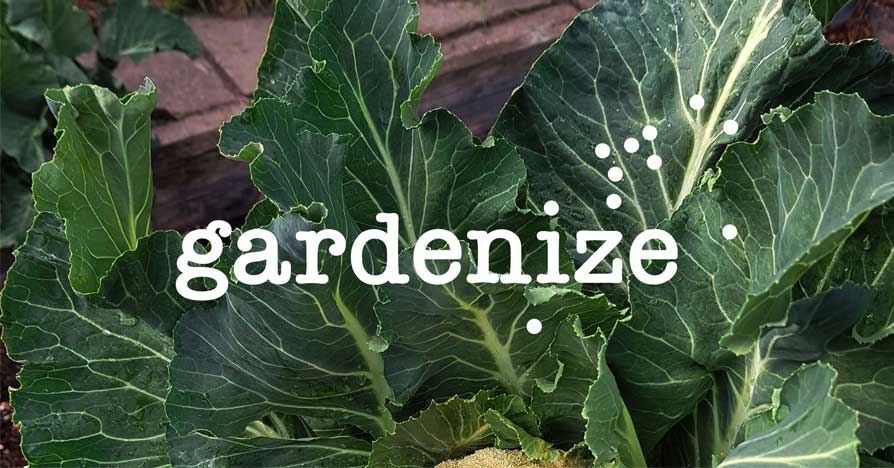Upside-down gardening: July in Central Otago
Look out for signs of spring! The first few spring bulbs should start to appear soon, and with the shortest day out of the way, you’ll notice longer daylight hours and a speeding-up of growth. Keep sowing seeds, planting out seedlings, and enjoy your garden!
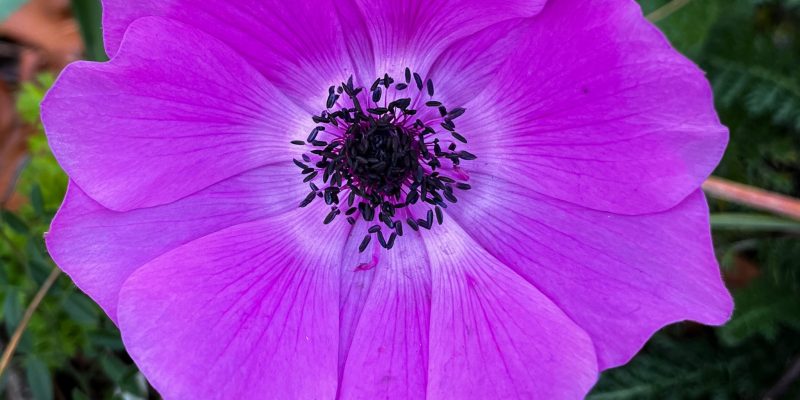
Winter
Winter colour, soil on rocky slopes, how to dispose of weeds, seeds to sow for the vegetable garden.
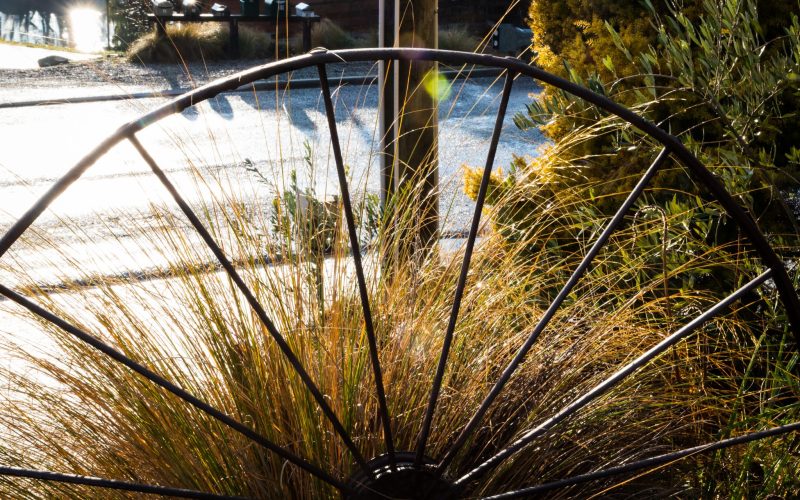
Colour on a cold day
Anemones
This anemone is proof that you shouldn’t give up on plants too soon. I planted some anemone corms a couple of years ago and I thought they were a failure because they didn’t flower, but to prove me wrong, one of those anemones has produced a vivid pink flower early in the season. It closes each night and opens again every day when the sun comes out, but it has lasted for over a week now and is just as bright every day.
Grasses
We have had a few days of rain and very cold weather, with snow on the mountains. Alexandra, where I live, rarely has rain, so the raindrops shining on the large grass behind my husband’s wheels were a welcome sight. There is a variety of grasses in the garden left behind by previous owners. Grasses are an acquired taste, I think. They look marvellous in a Piet Oudolf-inspired, naturalistic setting, where they are planted in a matrix to soften the effect of the flowers. They’re very tough and they add movement to a border, but they are best where they catch the light. I’m still thinking about the best way to use the ones that I have inherited.
Heather
Heather is an introduction to New Zealand and is a noxious weed in some areas. This patch of heather at the base of the steep rocks at the rear of the property provides a welcome splash of colour. My husband likes it, because it is one of very few places in the garden where there is a patch of just one species.

Iris unguicularis
This iris has long, strappy leaves, which can hide these beautiful blue flowers. This year, thanks to a reminder in my Gardenize app, I remembered to cut back the leaves in June, and now I can enjoy the winter flowers.
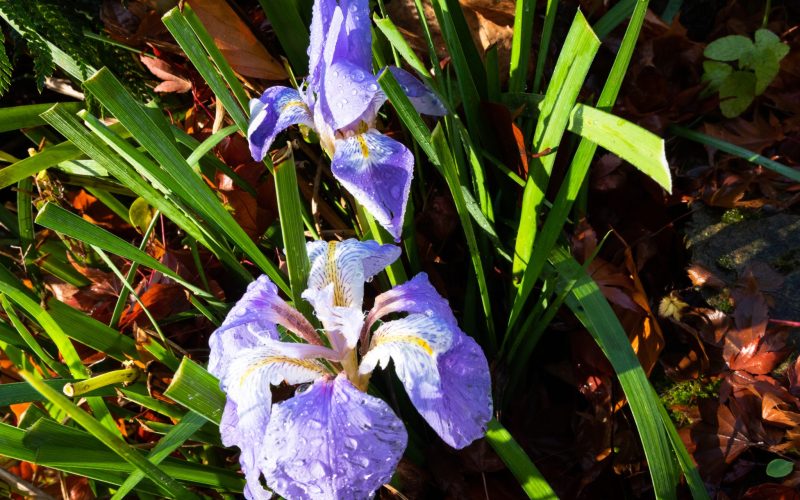
Alyssum and gazanias
Even in winter, you can rely on gazanias and alyssum to provide some colour and interest. Both of these plants self-seed very generously and thrive in places where other plants will not. Gazanias can form large, woody clumps, so I like to cut back the longer stems to keep them looking fresh.
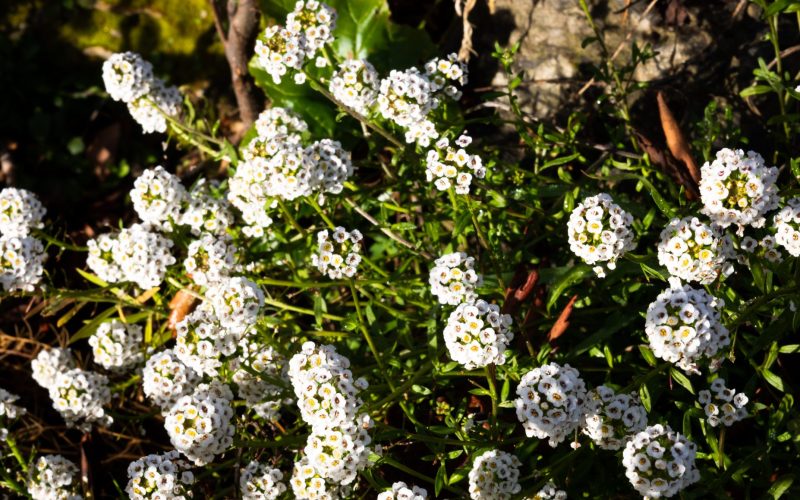

Lichen
How do plants manage to grow on steep, rocky slopes? With the help of the organic community. The soil on the near-vertical rockface at the rear of our property builds up in cracks with the help of lichen, which can even grow into the rock itself, thanks to the oxalic acid it contains. As the lichen grows and dies, it forms more soil itself, so that plants with spreading root systems can find a foothold. Their roots hold the soil even more firmly and help it to build up more. Even spiders help, as their webs help to trap dust and moisture.
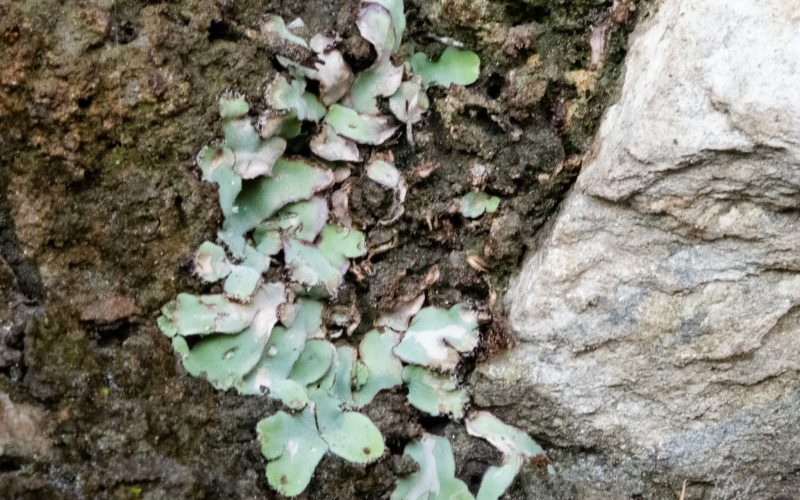
Vegetable gardening through winter
Peas
I was disappointed with the peas I grew in spring last year, so I decided to experiment with sowing some in late autumn. I was utterly careless: I didn’t even plant them properly, but just threw them down under the support. They’re thriving and don’t seem to care about the frost. I also sowed some sweet pea seeds in a milk bottle outside. Soon, they were trying to climb out of the plastic bottle, and I could see their roots through the semi-opaque plastic. I’ve planted them in the ground outside my sewing room window, using contorted willow branches as supports. I’m hoping they will obscure the view of the worm farms as they grow.
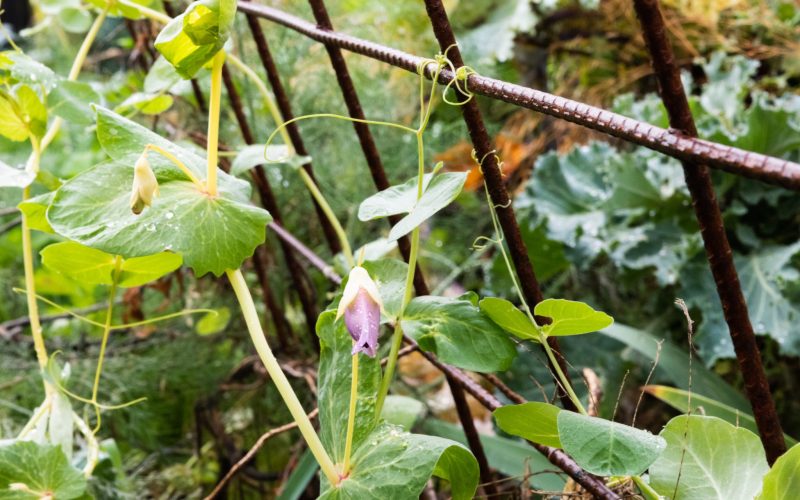
Pak choi seedlings
I’ve been sowing seeds in used plastic milk bottles, which I keep outside. As the seedlings produce their true leaves, I put them straight out into the vegetable patch. These Pak Choi Mini Le Rein have developed long roots and are ready to be planted, along with some onions and tiny beetroots. Because they are so small, it can be tricky to mulch around them, but as they grow, I’ll put down good compost from the worm farms. In the meantime, I give them worm tea and sprinkle wood ash around them.
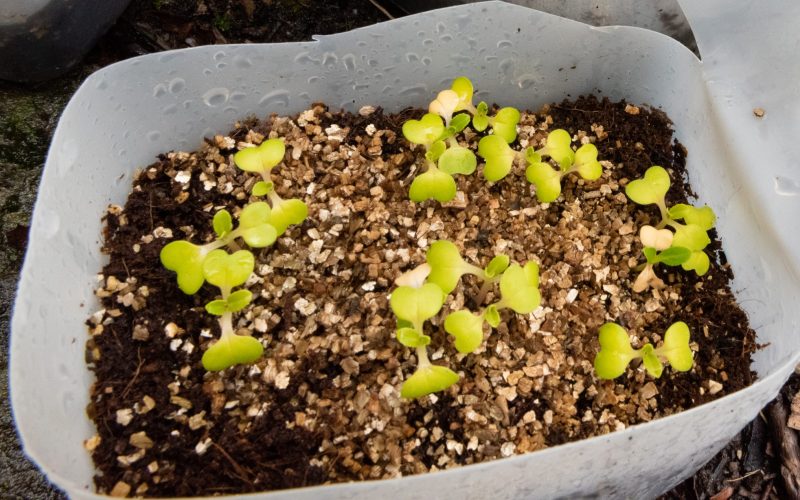
Making a weed soak
If you put the roots of persistent weeds like couch and vetch in your worm farm or compost heap, you run the risk of putting them back into the garden where they will grow again. Last year, I put my couch roots into buckets and covered them with water. The water turned into a stinky, muddy brew, but it was full of helpful microbes to give life to the soil. After several months, the solid contents of the buckets turned into mush, which I then put in the worm farm. This year, I’m going for a tidier, more efficient version. I have filled an old homebrew barrel with weeds and water. I’ve read that if I stir the weed soak every day, it will not be as smelly. Having the tap makes it easier to pour off the weed tea into a watering can. I’ll sprinkle it wherever the soil looks particularly lifeless. This way, any goodness that the weeds took from our soil will be returned, and we don’t need to use chemical fertilisers.
Gardening jobs to do in July
You can sow: onions, peas (but see above), radish, shallots and spinach. I’m sowing onions and shallots in small batches, once a week or more frequently.
That way, I’m hoping to improve my chances of getting good results, because each batch will be started in different weather conditions.
Towards the end of the month, check your houseplants to see whether they need to be repotted. Some might be good candidates for propagation, either through splitting them up, or through taking cuttings.

About the writer
My name’s Pamela and a few years ago, at the age of 55, I made the decision to start a new adventure. I left the northwest of England, where I had lived all my life, and moved to New Zealand. I’m excited to be a guest blogger on Gardenize, and I love writing about my garden in beautiful, sunny Alexandra in Central Otago. My garden here is about as different as it could get from the damp, shady garden I left behind. Central Otago is the hottest, driest, coldest area in New Zealand, as we have hot summers and cold winters, along with a semi-arid climate. The area is famous for its orchards and vineyards. It has many quaint little rural townships with pretty cottage gardens featuring peonies, bearded irises, hollyhocks, lilies, roses, and lavender that grow so well here. The landscape is spectacular, with dry, rocky mountains and impossibly blue lakes and rivers. The dry mountains look barren, but they’ve actually covered in tough little thyme plants: a great clue to what might grow well in the garden.
GARDENIZE GARDEN APP
A gardening friend with a green thumb and photographic memory
Gardenize is an app for gardening and cultivation that helps you to overview, understand and develop your garden and your gardening skills.
Order makes it easier to succeed and Gardenize structures information and photos and makes it searchable for you. You also get tips and inspiration from other Gardenizers around the world.
Gardenize is free to use and you can download Gardenize from the App Store or Google Play, or create an account the Gardenize web app for web browsers.
Get to know Gardenize better here.

